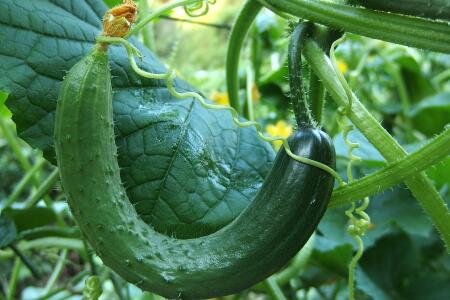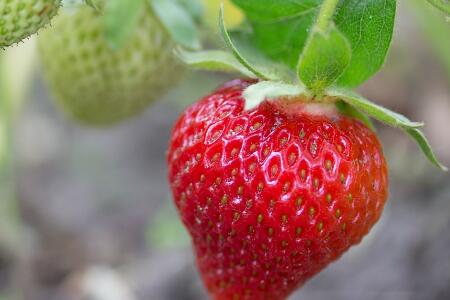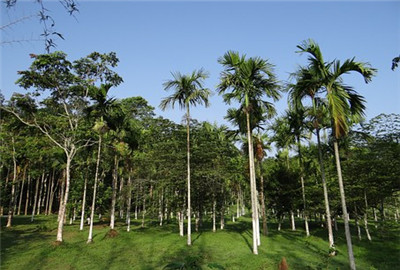Symptoms and control methods of cucumber aphids and root nematodes (root knot nematodes)!
Cucumber, a widely cultivated annual trailing or climbing herb of Cucurbitaceae, is very prone to aphids and root nematodes in its growth process. Here are the symptoms and control methods of these two pests.

Symptoms and control methods of aphids
Main symptoms: aphids, also known as greasy insects, are common pests in cucumber production. Cluster on the back of melon leaves or young stem buds, suck juice slices and curl deformities, and spread the virus. When damaged by aphids, a large amount of honeydew pollutes leaves and fruits, causing parasitism of coal fouling bacteria and affecting photosynthesis.
Prevention and control methods:
(1) to clean up the countryside. Timely removal of weeds in the field and on the ground, treatment of residual branches and leaves, and timely spraying of disinfectants for disinfection.
(2) physical and biological control: using yellow board to trap and kill, using silver gray film to cover the ground or hanging silver gray film strip in greenhouse, greenhouse and other fields can play the role of avoiding insects. Biological control can be controlled by spraying microbial pesticide BT emulsion.
(3) strengthen field management, improve plant disease resistance, and fertilize and water rationally.
(4) prepare tobacco water with the proportion of 1:15, soak for 4 hours and then spray.
(5) spray the solution of detergent, urea and water with a ratio of 1 to 4.
(6) use 95% mineral oil 200 times liquid for 3-4 times, or nicotine, veratrine and other prevention and treatment.
(7) using ladybugs, lacewings and other natural enemies for control.
Symptoms and control methods of root nematode
Main symptoms: cucumber root-knot nematode disease mainly harms the lateral root and fibrous root of cucumber. The fibrous root or lateral root is infected, resulting in nodular root knots of different sizes, light yellow to yellowish brown. The root knot was dissected and many slender peristaltic milky white nematodes were parasitized in the diseased tissue. Thin new roots can generally grow on the root knot and form a root knot tumor after infection. The symptoms of the aboveground part of the mildly diseased plant were not obvious, but when the disease was serious, the plant was obviously dwarfed, the melon was few and small, the leaves faded and yellowed, the aboveground part of the plant wilted or gradually withered at noon on a sunny day, and finally the plant withered.
Prevention and control methods:
(1) selecting disease-resistant and disease-tolerant varieties.
(2) choose disease-free soil to raise seedlings and cultivate disease-free and strong seedlings.
(3) diseased plants were found and removed in time during transplanting.
(4) rotation with onions, garlic, leeks and other vegetables for more than two years. The land with serious disease had better be rotated with Gramineae crops, and the effect of flood-drought rotation was the best.
(5) ploughing deeply or changing soil. When changing stubble in summer, plough more than 25 centimeters of soil and apply fully mature organic fertilizer at the same time, or replace all the topsoil within 25 centimeters.
(6) after pulling cucumber seedlings, remove the diseased and residual roots in time, bury them deeply or burn them, and eradicate weeds in the field.
(7) High temperature soil disinfection in summer. At high temperature in summer, 5cm wheat straw and 100kg calcium superphosphate were sprinkled in the greenhouse, then turned into the ground, covered with plastic film and sealed in the greenhouse, so that the temperature of the greenhouse was as high as 70 ℃, the temperature of the soil 10 cm deep was as high as 60 ℃, and the greenhouse was closed for 15-20 days.
(8) after pulling cucumber seedlings, before the next crop is planted, add short growth period and susceptible crops, such as pakchoi, spinach, etc., and then dig them out of the shed after infection, and spray them on the loose surface.
Time: 2019-04-11 Click:
- Prev

What if the leaves of strawberries, blueberries, watermelons and cantaloupes turn yellow? What is the cause?
Strawberries, blueberries, watermelons and cantaloupes are prone to yellowing leaves during their growth. Do you know what causes them? What should I do? In fact, in junior high school biology textbooks, there is an introduction to the role of various nutrient elements that affect plant growth.
- Next

Where can betel nut trees be planted? What's the difference between it and a palm tree?
We often see the packaged betel nut at the front desk of the store, but we seldom see the betel nut tree in our life. It is mainly distributed in Central Africa and Southeast Asia. It has been introduced and cultivated for 1500 years in China, and it is widely cultivated in Hainan and Taiwan provinces. Guangxi, Yunnan, Fujian and other provinces (regions) also have cultivation. that
Related
- Fuxing push coffee new agricultural production and marketing class: lack of small-scale processing plants
- Jujube rice field leisure farm deep ploughing Yilan for five years to create a space for organic food and play
- Nongyu Farm-A trial of organic papaya for brave women with advanced technology
- Four points for attention in the prevention and control of diseases and insect pests of edible fungi
- How to add nutrient solution to Edible Fungi
- Is there any good way to control edible fungus mites?
- Open Inoculation Technology of Edible Fungi
- Is there any clever way to use fertilizer for edible fungus in winter?
- What agents are used to kill the pathogens of edible fungi in the mushroom shed?
- Rapid drying of Edible Fungi

